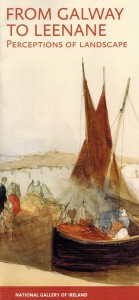From Galway to Leenane: Perceptions of Landscape
Published in 18th-19th Century Social Perspectives, Blogging Irish HistoryIn August 1838 the English artist William Evans of Eton (1798-1877) visited Connemara, and recorded what he saw in a collection of 41 watercolours. Having been acquired by the National Gallery in 2008, the collection is currently on display for the first time in its entirety.

When Evans made his journey, Connemara was in the process of being rendered accessible by road and rail. An awareness of Connemara’s rugged but remote landscapes had already been fostered by a variety of writers who had recorded their impressions of it. Yet any romantic notions prompted by the landscape were often tempered by an awareness of the poverty of those who lived there. Connemara was densely populated in the immediate pre-Famine era, and the inhabitants flit in and out of Evans’ depictions of the landscape. The historical significance of his images is that they offer a depiction of Connemara – and Galway City – in the years prior to the Famine. His renditions of landscapes such as the Inagh and Maam valleys, or Killary Harbour, are strikingly accurate and remain recognizable. Equally, his more densely populated depictions of areas such as the Claddagh and the Spanish Arch in Galway itself offer intimate portraits of a vanished world. This is a small exhibition, on display in the NGI’s print gallery, but is well worth a visit; it can be navigated comfortably in 20 minutes, and for those familiar with Connemara and Galway, or who are simply curious about them, those 20 minutes will certainly not be wasted.
‘From Galway to Leenane: Perceptions of Landscape’ runs at the National Gallery of Ireland, Merrion Square West, Dublin 2, until 29 September. Admission free.
http://www.nationalgallery.ie/en/Exhibitions/From_Galway_to_Leenane.aspx
















